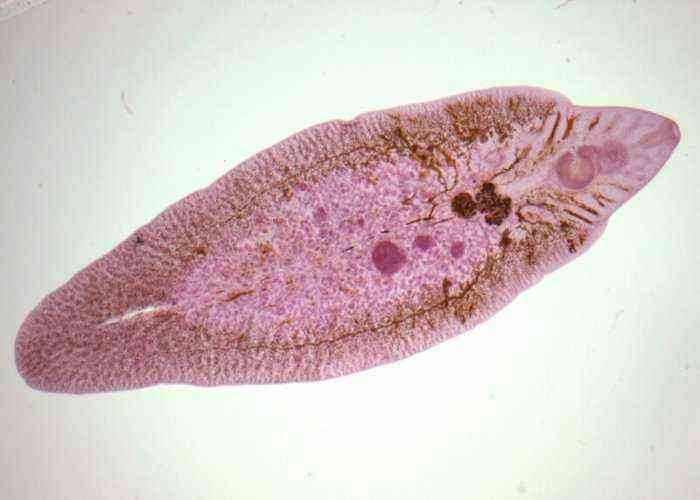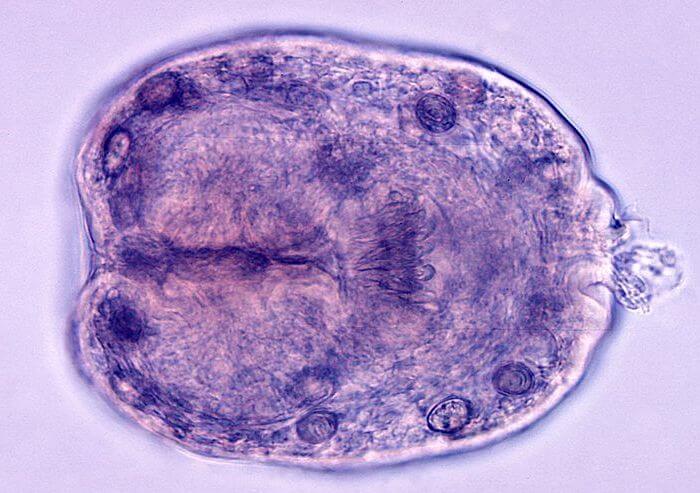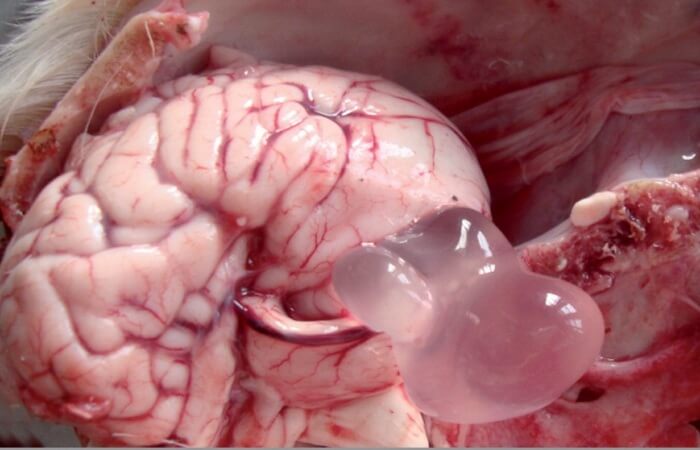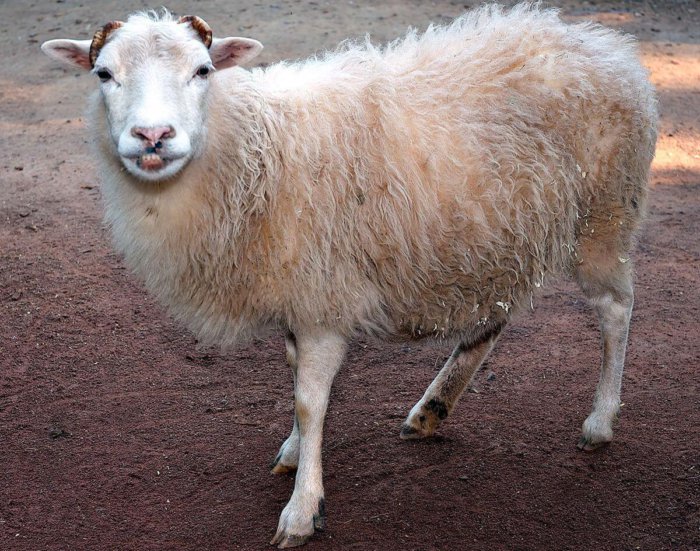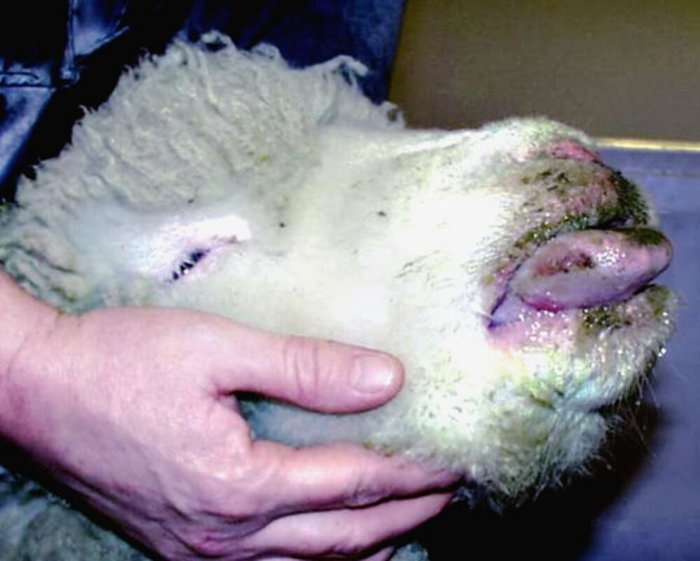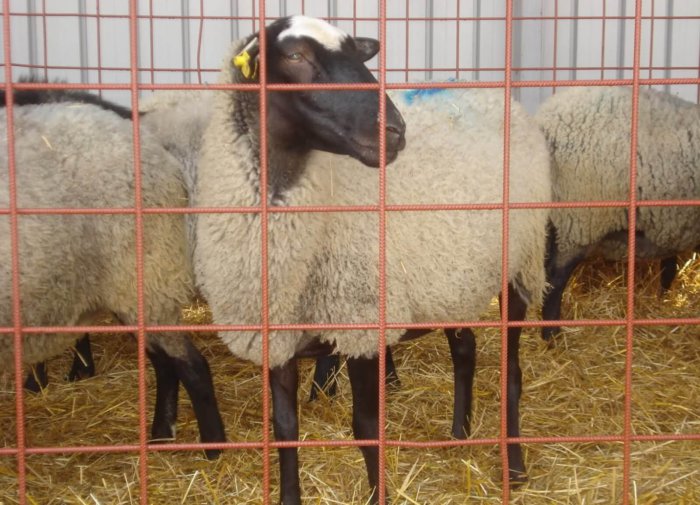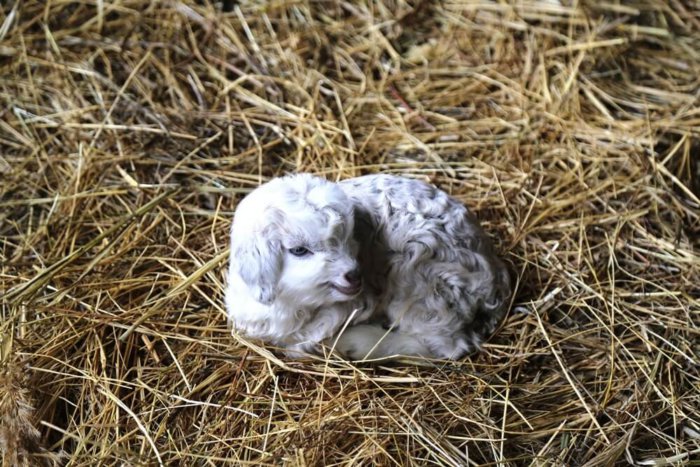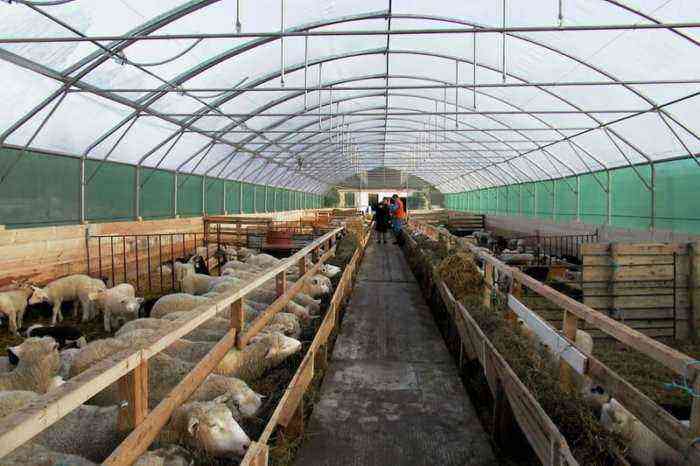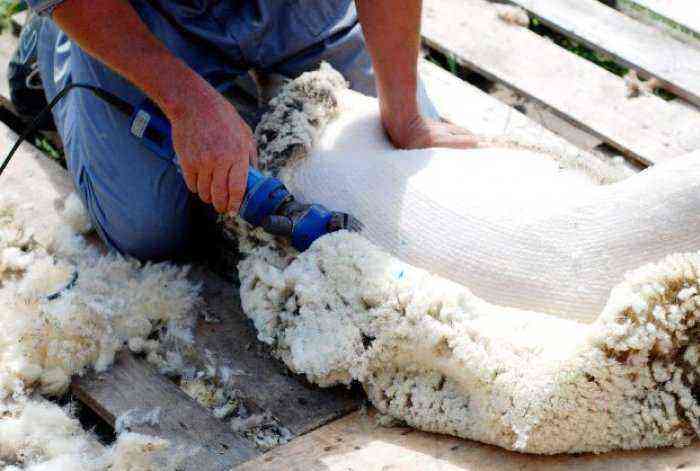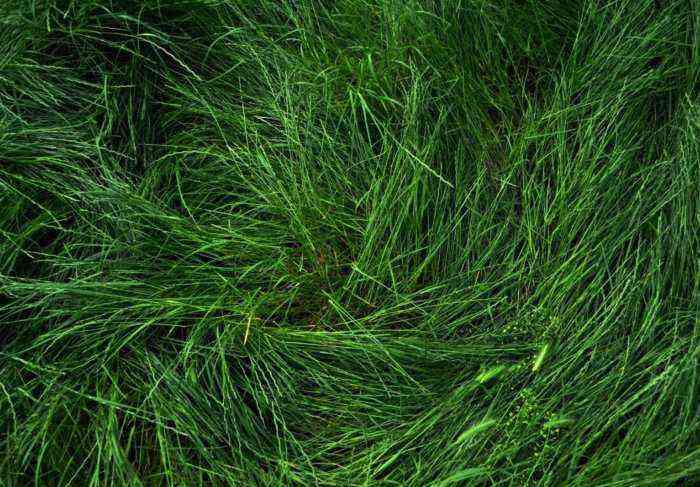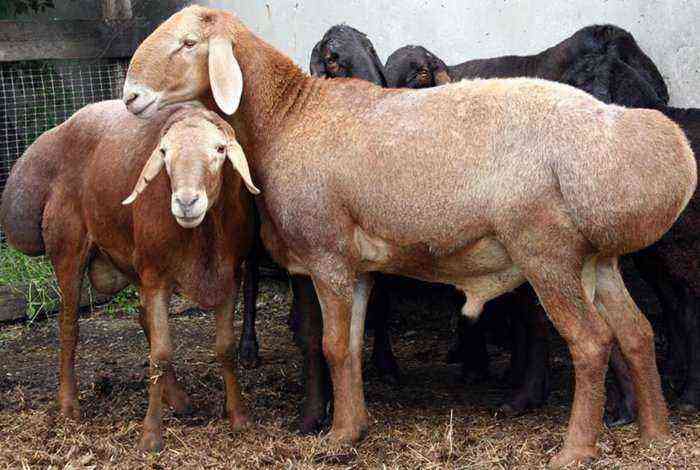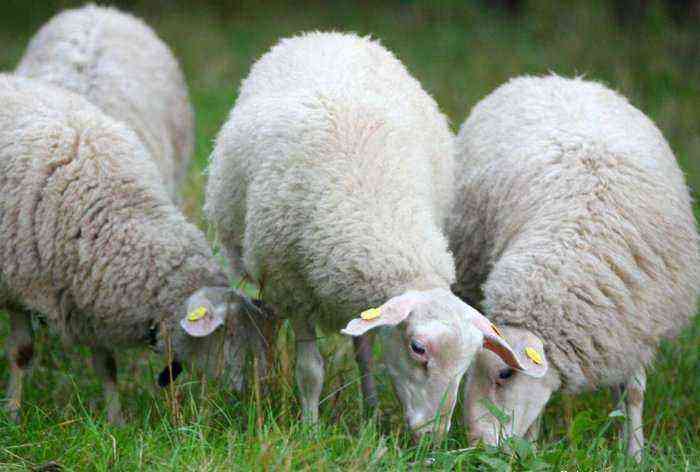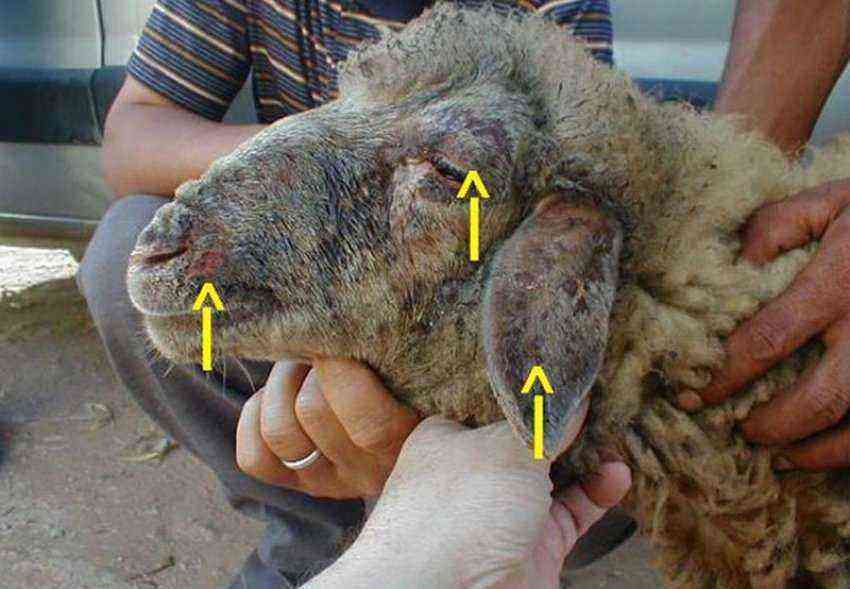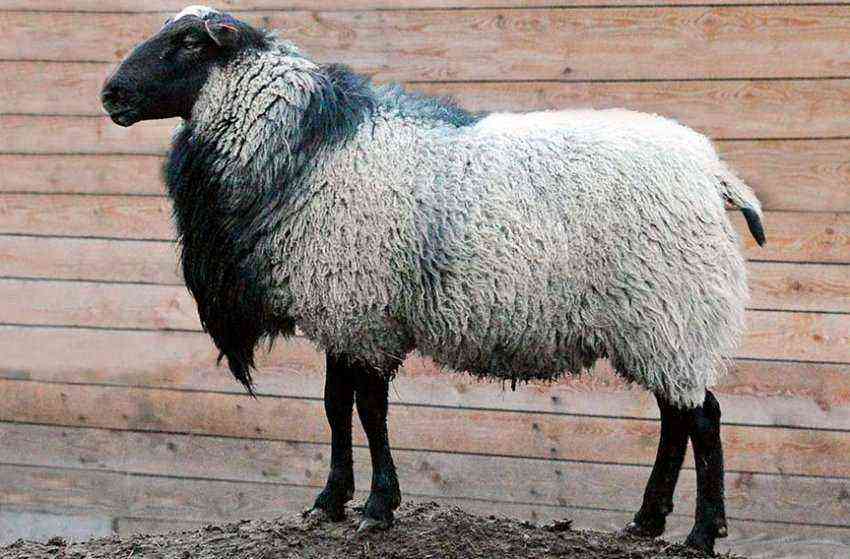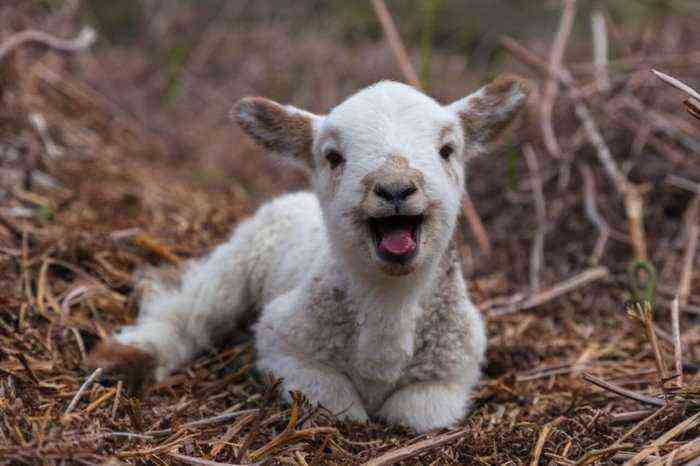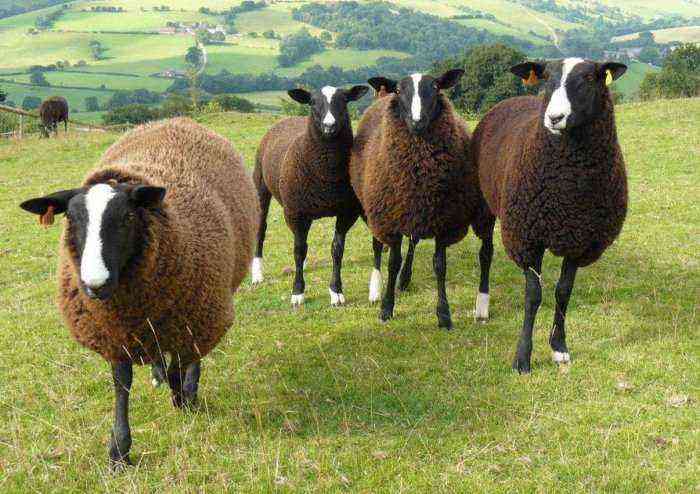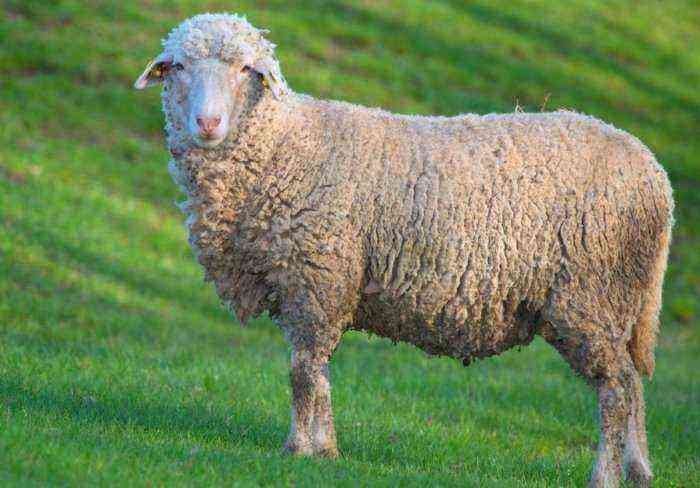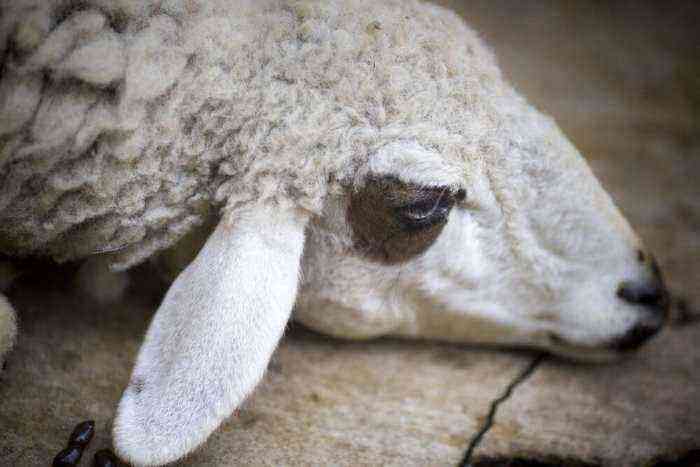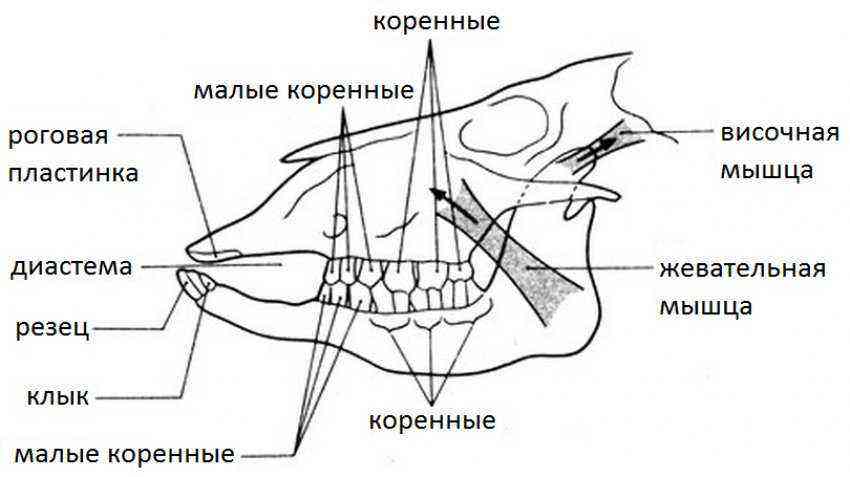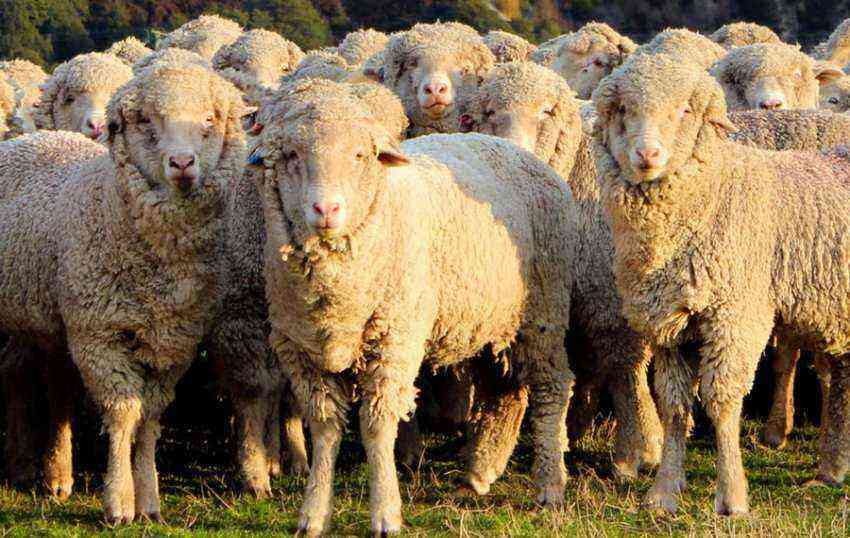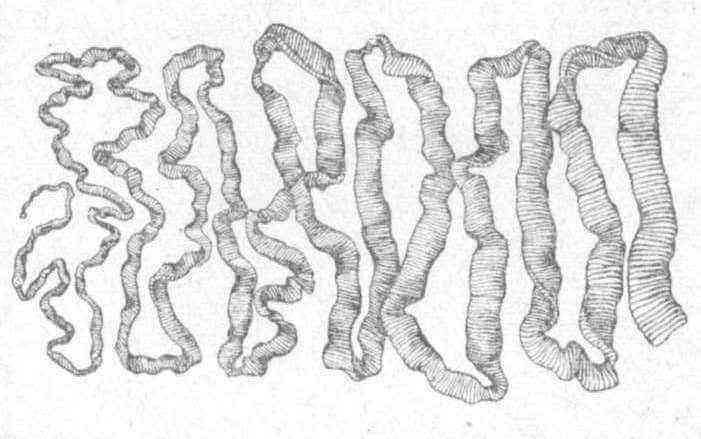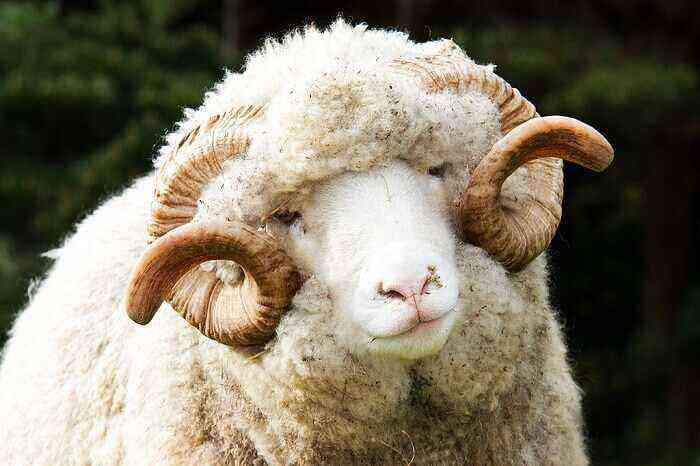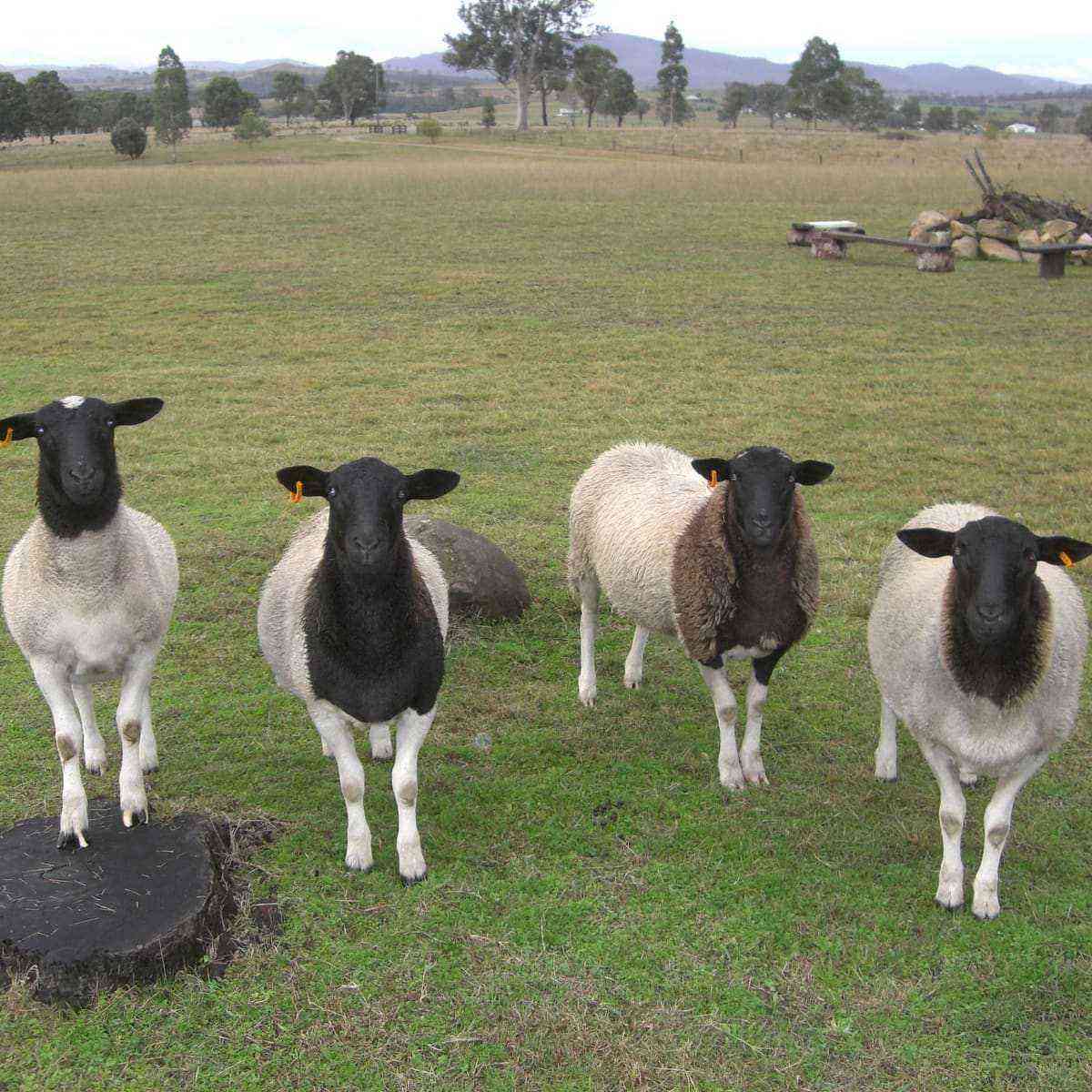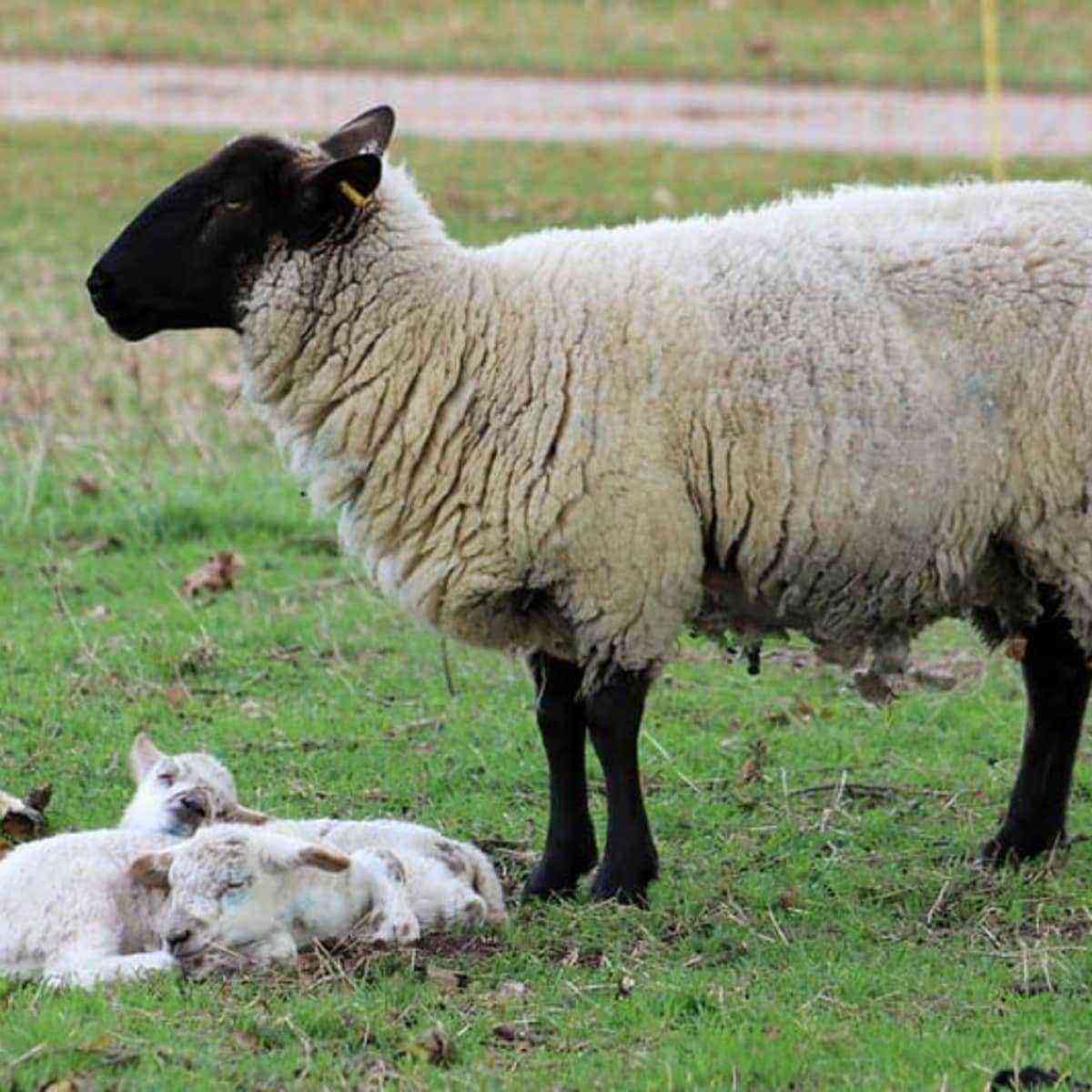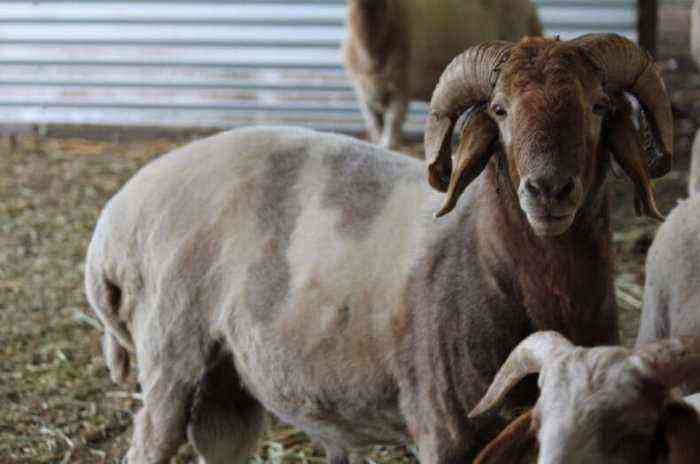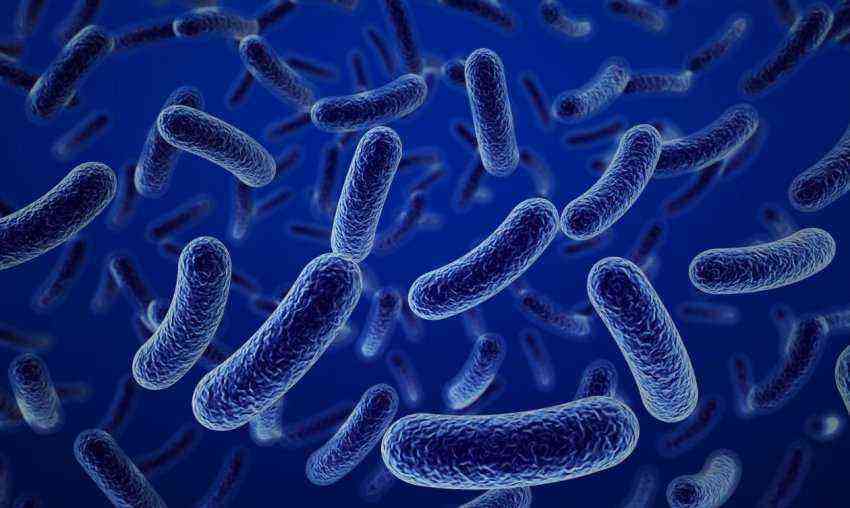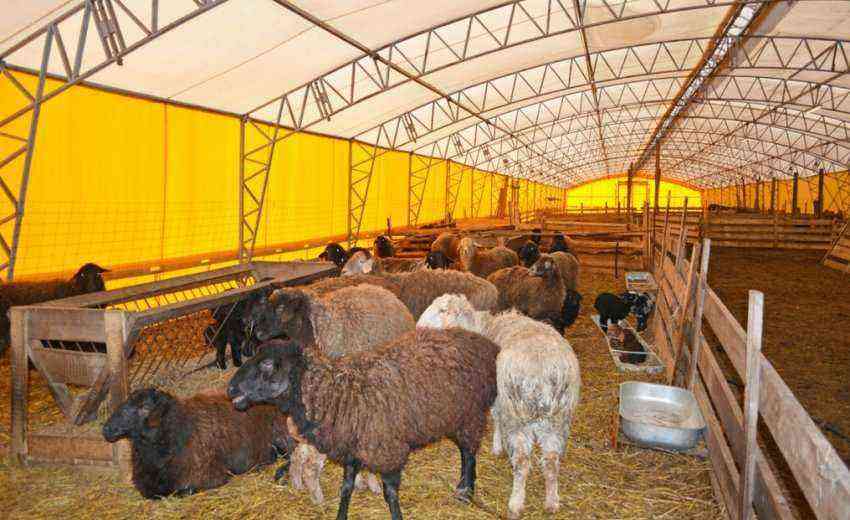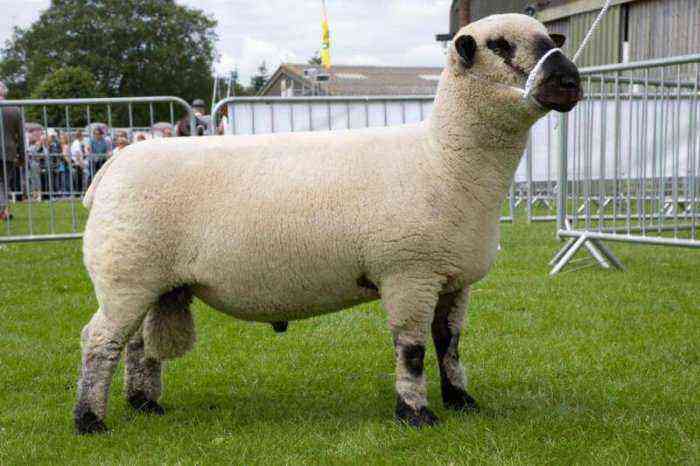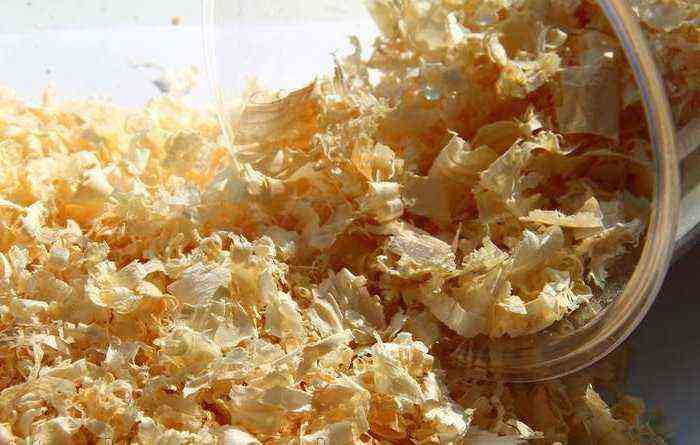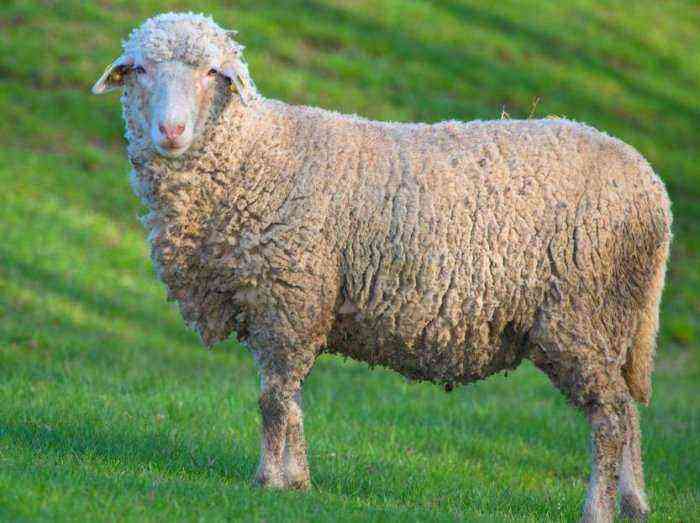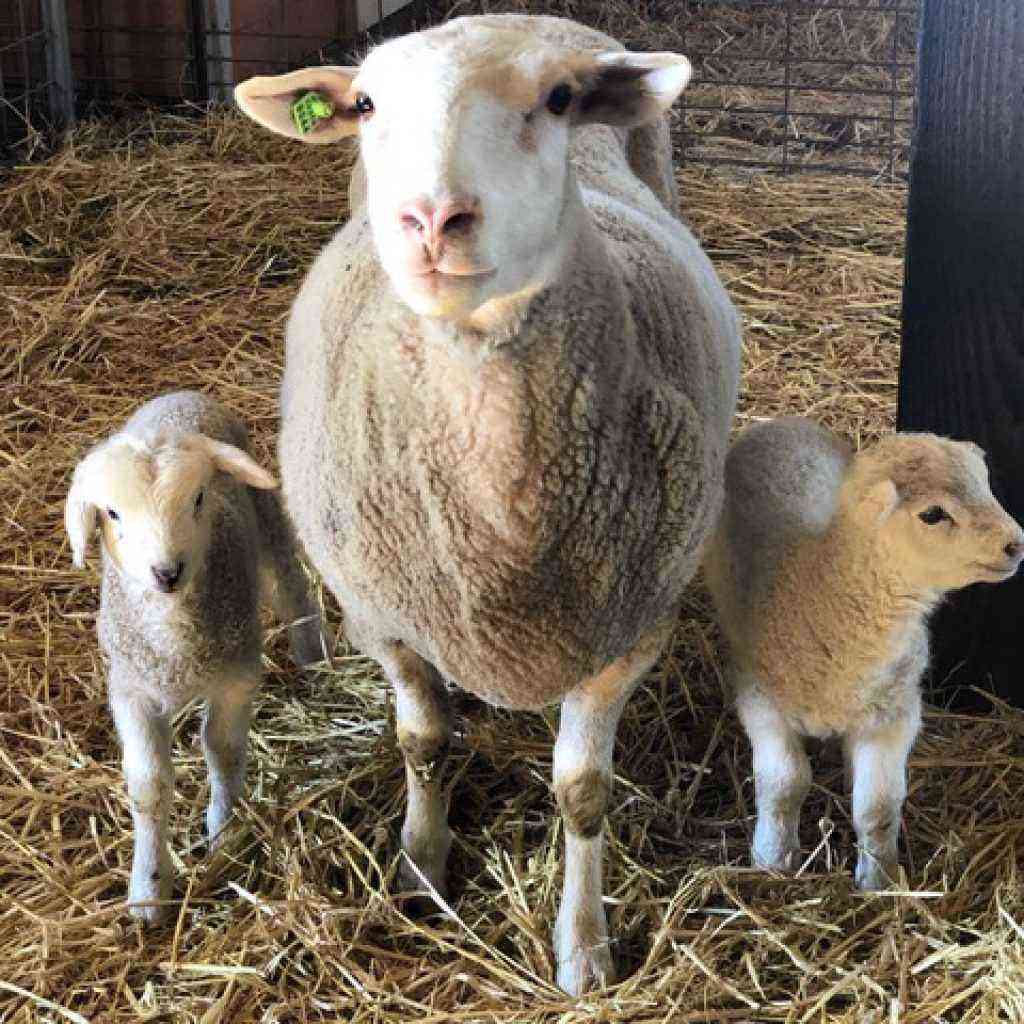Sheep diseases are divided into 3 groups – invasive (caused by parasites), infectious and non-infectious. The second group is of particular danger, since these ailments are provoked by viruses and bacteria. Microorganisms are quickly transmitted from sick individuals to all other animals. This article will briefly review common sheep diseases, their symptoms and treatments.
Sheep with offspring
Parasitic diseases of sheep
Diseases caused by parasites are contagious in most cases. Helminths, insect larvae, ticks can get into the body of a sheep. Consider these diseases and their manifestations.
Helminthiasis
Helminths, or worms, are worms that parasitize in the body of animals. These include nematodes, trematodes, cestodes that affect various internal organs of sheep. Worms can develop in the intestines, liver, lungs, brain. In each case, the symptoms of the disease manifest themselves in different ways. However, there is a general trend towards:
- exhaustion;
- growth retardation;
- deterioration of the condition of the coat, its loss;
- disruption of the intestines.
For the treatment of helminthiases, anthelmintic drugs are used – Albendazole and its analogues.
Fasciolosis
The causative agents of the disease are the trematodes fasciola. They parasitize in the bile ducts of animals. Infection occurs by ingestion of helminth eggs during watering and grazing.
The causative agents of the disease are trematodes fasciola
The symptoms of fascioliasis are as follows:
- digestive disorders – a sheep has diarrhea, after which constipation occurs;
- loss of appetite;
- exhaustion;
- wool falls out;
- bloating;
- swelling of the eyelids;
- temperature may rise.
For the treatment of fascioliasis, anthelmintic drugs are used – Pirantel, Albendazole. Twice a year it is recommended to carry out deworming of the entire livestock.
Echinococcosis
The causative agent of the disease is echinococcus larvae that affect the liver, lungs, spleen and other internal organs. Sheep are the intermediate host. They swallow echinococcus segments when they eat polluted grass in a pasture. Further, oncospheres are isolated from them (in the intestines of a sheep), which are carried with blood and lymph to different organs. In places of localization of oncospheres on the internal organs, blisters filled with liquid form. They contain up to 50000 scolexes. The disease proceeds in a chronic form, the symptoms almost do not appear. But according to some signs, it can be assumed that an infection with echinococcosis has occurred:
- cough and shortness of breath indicate lung damage;
- if the liver is affected, it increases in size;
- exhaustion;
- loss of appetite;
- growth retardation.
Treatment against the larval stage of echinococcosis has not been developed.
Echinococcus
Piroplasmosis
The causative agent of the disease is piroplasm. They enter the body of sheep through tick bites. Piroplasms infect the blood and organs of animals. Symptoms:
- A sharp rise in temperature to 42 degrees. Then it remains at this level for some time.
- Jaundice of the mucous membranes.
- Diarrhea is replaced by constipation, mucus is present in the feces.
- Rapid breathing and palpitations.
- The animal lags behind the flock, stands with its head down.
Treatment is carried out with drugs: Piroplasmin, Tiargen, Akaprin, Flavacridine.
Cenurosis
Coenurosis is caused by larvae of the brain coenur. Sheep ingest oncospheres or tapeworm eggs in pastures, after which they are hematogenously transferred to the brain. Symptoms do not appear immediately. The first signs of coenurosis can be seen only 2-3 weeks after infection of the animal (stage 1 of the disease):
- the sheep is frightened, excited;
- the animal moves aimlessly in a circle, behaves strangely.
For two weeks, such oddities in the behavior of the cattle can be observed, but then the symptoms no longer appear for a long time (stage 2). In the brain of a sheep, a cerebral tsenur grows, this is the 3rd stage of the disease, it lasts for several months. The 4th stage of coenurosis is characterized by a sharp deterioration in the condition of the animal – it has convulsions, seizures, the sheep moves forward, not noticing obstacles, wanders in a circle. There is exhaustion. Soon the sheep dies.
Reference. If coenurosis is detected, the animals are slaughtered.
Sign of coenurosis
Tick-borne encephalitis
The causative agent is an encephalitic tick. Their activity falls on the spring-summer period. The parasite enters the skin of a sheep and feeds on its blood. Arthropods carry dangerous diseases, such as encephalitis. The virus infects the central nervous system of animals. Symptoms:
- fever;
- the animal lies, as it feels muscle pain;
- paralysis of the limbs;
- paresis;
- nervous phenomena – tilting the head;
- respiratory dysfunction.
Weakened animals usually die within a few days, while those with stronger immune systems are able to recover. Serum immunoglobulins are used as treatment.
Melophagosis
This disease is caused by the sheep fly. She lays her eggs in the fur of animals, which pupate after a few hours. On the body of the sheep, they develop and turn into an adult.
Symptoms:
- itching;
- deterioration in the appearance of wool – felting;
- scratching, skin dermatitis.
Attention! Melophagosis often leads to the formation of bezoars in the stomach of a sheep.
Hexachlorane emulsions are used for treatment. A single treatment of the animal is enough to destroy the parasites.
Infectious diseases
Infections are especially dangerous, since most of them spread quickly among sheep, as a result, the entire livestock can die. Such diseases are easier to prevent by resorting to routine vaccination.
sick sheep
Listeriosis
Listeria is a polymorphic bacterium that can become infected in various ways – through the mouth, mucous membranes of the eyes, through the air, and even through flea bites. The disease occurs in different forms, but damage to the nervous system is of particular danger. In this case, the mortality rate reaches 100%.
Symptoms of listeriosis:
- fever;
- oppression;
- diarrhea;
- nervous phenomena – convulsions, falls, movement forward or in a circle;
- curvature of the neck;
- mucous discharge from the nose;
- photophobia, dilated pupils.
Treatment of listeriosis is ineffective, but when the first symptoms of the disease are detected, tetracycline antibiotics are often used:
- Terramycin;
- Solamox;
- Bicillin;
- Klamoksil.
Listeriosis in sheep
Bradzot
The causative agents of the disease are bacteria belonging to the genus Chlostridium, which are normally present in the microflora of the digestive tract of sheep. In case of disruption of the intestines and other adverse factors, they begin to multiply rapidly, releasing a huge amount of toxins. Depending on the form of the course of the disease, the symptoms differ. With a fulminant form, animals suddenly die without detecting clinical signs of the disease.
With a hyperacute course, the following symptoms are observed:
- foam and blood from the mouth;
- bloody stools;
- teeth grinding;
- bloating of the abdominal cavity;
- lack of gum;
- swelling of the eyelids, neck, chest;
- frequent breathing
- excitation;
- hopping gait.
The animal dies within 5-6 hours after the first alarming symptoms appear. With an acute character, the signs of the disease are slightly smoothed out, and death occurs after 12 or more hours.
Treatment of bradzot is ineffective, in most cases the veterinarian simply does not have time to start helping the sick sheep. In the event that the disease proceeds in an acute form, it is advisable to start using injections of cephalosporin antibiotics as soon as possible.
Smallpox
Smallpox in sheep is caused by a highly virulent virus containing a DNA molecule. The disease is transmitted from sick animals or virus carriers who managed to recover. Smallpox symptoms:
- oppression;
- heat;
- the appearance on the body of bubbles with liquid contents, which subsequently change, burst, and crusts form in their place;
- discharge from the nasal passages and eyes;
- refusal to eat.
Symptoms of smallpox in sheep
Treatment is effective at the initial stage of the disease. Veterinarians recommend the use of powerful antibiotics with a wide spectrum of action, as well as immunostimulating drugs.
Adenomatosis of the lungs
This disease is caused by a virus containing an RNA molecule. The disease has a very long incubation period, so it can not be detected for a long time. The route of transmission of the virus is airborne. Adenomatosis is characterized by the growth of glandular tissue in the lungs. As the disease progresses, the foci become more and more. As a result of the appearance of neoplasms in the lungs, stagnation occurs, then tissue necrosis develops.
Symptoms:
- dyspnea;
- cough, wheezing;
- oppression;
- purulent discharge from the nasal passages;
- exhaustion.
Attention! Lung adenomatosis is not treated, animals are sent for slaughter. When a case of disease is detected on a farm, a complete flock replacement is recommended.
infectious mastitis
This disease is caused by a staphylococcal infection. Infection of sheep occurs through the litter, and is transmitted to lambs with mother’s milk. If a lamb is infected, the disease proceeds in him in the form of pneumonia. In adults, the udder becomes inflamed, more often one of its shares.
Symptoms:
- oppression;
- the skin of the udder is hyperemic, purple or even cyanotic;
- on palpation of the mammary gland, the sheep experiences pain, the udder is hard;
- purulent exudate is released from the nipple.
Treat mastitis with penicillin antibiotics and sulfonamides
Treatment is carried out with the help of antibiotics of the penicillin series and sulfa drugs. Intravenous injections are used with the addition of antibacterial agents, washing of the milk ducts with a warm soda solution, followed by pumping.
Attention! Treatment not started on time in most cases leads to death from sepsis.
Infectious agalactia
This disease is provoked by mycoplasmas – microorganisms that are similar to both viruses and bacteria. Penetrating into the body of sheep, they affect the organs of vision, joints or the mammary gland. Sheep are predominantly ill with infectious agalactia after lambing.
Symptoms:
- depression, refusal to eat;
- temperature increase;
- skin rash;
- lameness with damage to the joints;
- signs of conjunctivitis with eye damage;
- if the pathogen is localized in the udder, then pus is released from the nipples, and flakes and bloody inclusions are found in the milk.
For treatment, immunostimulants, antiviral and antibacterial drugs, as well as drugs that relieve swelling, ointments and compresses are used.
Attention! The use of antibiotics for infectious agalactia can prevent the development of purulent mastitis and other complications.
Footrot
Until recently, there was no evidence of the origin of foot rot in sheep. Now scientists have found out that the bacterium Bacteroides nodosus is related to it. It affects the epithelium of the hoof, gradually destroying it. Subsequently, another pathogenic microflora penetrates into the lesions, causing inflammation and suppuration in the interhoof gap.
Foot rot in sheep
Disease symptoms:
- lameness;
- redness of the skin in the hoof area;
- hair loss in the lower part of the limbs;
- a white exudate is released from the interhoof gap, which has a putrefactive odor;
- hoof deformity;
- shoe delamination.
Attention! This disease can lead to serious complications if the infection affects the tendons, ligaments. Through the bloodstream, harmful microorganisms can spread to the udder and other organs.
For the treatment of hoof rot, hoof cleaning, formalin baths, and broad-spectrum antibiotics are used.
Non-communicable diseases and their symptoms
This group of diseases does not pose a danger to the entire livestock. However, non-contagious diseases can cause damage to the economy, since many pathological conditions, if left untreated, lead to the death of the animal.
Poisoning
If a sheep eats a poisonous plant or spoiled food – rotten root crops or rotten hay infected with mushrooms, it can get poisoned. In case of poisoning, various symptoms are observed:
- diarrhea;
- vomiting;
- apathy;
- weakness;
- strong thirst;
- sometimes there are nervous manifestations (in case of poisoning with poisons).
When poisoned, the sheep becomes lethargic and lethargic
Having found symptoms of poisoning in an animal, it is advisable to do a gastric lavage. In some cases, antidotes are used, as well as mucous decoctions to prevent the absorption of poisons into the blood. At the same time, sorbents are used for treatment to remove toxins from the body.
white muscle disease
This disease occurs in young animals, the disease is characterized by damage to the heart, skeleton and nervous system of animals. The cause of the disease is a lack of certain substances in the body – protein, vitamin E and the trace element selenium. Mostly lambs are ill, moreover, in animals up to two months of age, the disease proceeds in an acute form, and in sheep older than 3 months – in a subacute or chronic form.
Symptoms of white muscle disease:
- thickening of the joints;
- lameness;
- violations of cardiac activity;
- convulsions;
- respiratory dysfunction.
The treatment of white muscle disease in lambs is carried out with the help of injections of sodium selenite and vitamin E. It is recommended to improve the diet of animals, include more concentrated feed in it.
bezoar disease
Bezoars are matted balls of wool in the stomach. If the diet of animals is poor, they lack minerals, then sheep begin to look for ways to replenish them. They develop a perverted appetite. Animals eat wool. Lambs chew it off their mothers. Lumps of hair that get into the stomach fall off, forming bezoars, which interfere with normal digestion and cause the stomach to stop working and the development of enteritis and other problems.
Symptoms of bezoar disease:
- eating wool;
- oppression;
- loss of appetite;
- constipation or a series of diarrhea with constipation;
- rapid breathing;
- pallor of the mucous membranes (a sign of lack of oxygen during tympania).
Treatment of bezoar disease is ineffective. In extreme cases, resort to surgical intervention to remove hairballs from the abomasum.
Attention! The animal can die from asphyxia (lack of oxygen) due to the increasing pressure on the diaphragm of the gases formed in the stomach.
Bezoar disease in a lamb
Scar flatulence
The accumulation of gases in the stomach is called flatulence. This pathology occurs in sheep at different ages, and bloating occurs due to a violation of the rules for feeding animals. You can not feed the sheep products that cause fermentation, moldy hay and rotten root crops. Flatulence also develops with bezoar disease.
Symptoms:
- restlessness and oppression;
- an enlarged belly;
- constipation.
You can provide emergency assistance with the use of a probe. It is injected through the mouth into the cavity of the stomach, which ensures the discharge of accumulated gases. Next, the sheep are given a drink of vegetable oil to make the stomach work, and they are also given probiotics at each feeding.
When alarming symptoms are detected in sheep, one should not hesitate. A sick animal is isolated from the rest as soon as possible, a veterinarian is invited for diagnosis and treatment begins. Unfortunately, it is not always possible to help a sick sheep when it comes to dangerous infections. It is important to prevent their spread in the economy. To do this, it is necessary to strictly follow the vaccination schedule for the livestock.
